|
|
 |
Peru, The
Andes |
|
The
journey to Peru was a package tour organized by a French agency. The
theme was "through the Andes".
The group was composed of 12 people. We had a qualified,
French-speaking, Peruvian woman guide.
The
tour was made in 1985, from July 19 to August 06, for the
package part and a private extension until August 17. After an Iberia
flight via Madrid, Miami and Bogotá, the arrival in Lima was
late.
The
report is in six tables. The general comments are given by the
Peru presentation. |
|
|
|
|
From Lima to Arequipa |
|
|
|
|
|
 |
|
Plaza de Armas
|
 |
|
Pisco |
 |
|
Nasca |
 |
|
Arequipa |
|
|
Approach: The Iberia flight was epic. A tire incident as the
plane take off in Madrid obliged a rerouting via Miami to carry out repair
before continuing towards Lima.
Lima takes its name after the Rimac river.
It was founded by Pizarro in 1535 under the name
of "Ciudad de Los Reyes" in an inhospitable milieu. Located
on a coastal desert, it is plunged in a stratus
fog stagnating 800m high during the winter months. The city
has more than 50 museums, three of them we visited. For the museums,
travellers must refer to a guidebook.
Like all Spanish colonial cities, the centre was arranged
around the Plaza de Armas, the true social activity centre of the city.
The major monuments are the Cathedral, the San Francisco
Convent and its Catacombs, the Government Palace.
The museum of Archaeology exhibits the richest collections of
pre-Columbian art, ceramics, sculptures, fabrics, goldsmithery. It is
set up in rooms according to the culture, the most interesting are Chavin, Mochica,
Chimu and "Inca".
The Larco Herrera museum is also a must for its Chimu and Mochica
collections. It exhibits pieces considered as "Huacos
eroticos".
The San Isidro and Miraflores districts are the residential
districts of Lima on the sea coast. Their visit is anecdotal on the
road to the museum del Oro.
The museum Oro del Peru is undoubtedly the gem of Lima.
Admittedly, the objects are so numerous that their accumulation becomes
quickly wearying to see. This unit represents only a tiny
part of the gold objects of the Inca empire. The largest part
was dispatched to Spain to be smelted as impious objects with the "
false gods" effigy.
Pisco: On the way to the south by the Pan-American we visited
the archaeological site of Pachacamac dedicated to the myth of
"Creator God" designated under the name of Irma. A very
beautiful halt was made in Chincha Alta for lunch in one of
the haciendas of El Carmen.
At the Pisco stage, on the Paracas peninsula , the Julio Tello
museum recalls the history of eponymous civilization. An
excursion on a boat to the Ballestras islands offered the
spectacle of the marine wolves as well as "the Candlestick"
drawn on mountainside visible from the boat.
The archaeological museum of Ica exhibits collections
coming from the excavations of the area rich in pre-incaic sites
of the Chavin culture.
Nazca was an important stage of the trip towards Arequipa. The
morning was devoted to the flight over the Pampa astronomy book
in a small plane. The site was studied by Dr. Kosok and his student,
Dr. Maria Reich whom we had the privilege to meet at this occasion.
It is not my purpose to describe the drawings. Specialized books and
Internet sites have been published on this subject.
Arequipa is an attractive city, an oasis at the foot of a extinguished
volcano in a desert area. It has kept its colonial aspect which
gives it exceptional charm. The Plaza de Armas gathers the main monuments
of the colonial period, the Compania, the Cathedral and further on, the Government Palace.
The monastery of Santa Catalina, a true citadel including a Spanish village,
was founded in 1580 with its church, its convent and its dwelling quarters.
On the road to the airport, the Yanahuara church presents a
baroque style frontage of the Arequipa school. |
|
|
|
|
|
The visit of Lima and Arequipa was my first contact with the Spanish
colonial style, baroque and very charged, in particular the inside
of churches. The museums and the pre-Columbian archaeological sites
awakened me to Andean civilizations.
The means of transport were bus, train and plane for the
largest trips.
|
|
|
|
|
From Puno to La Paz |
|
|
|
|
Approach: The transfer from Arequipa to Juliaca was made
by a very short flight. Getting off was a difficult moment 3,825m high,
under a blue sky and in biting cold. The landing and the arrival on the
tarmac were an experience of the brutal passage to the high altitude,
we tottered towards the airport.
Puno: The towns of Juliaca and Puno have little interest, the
former is the city of the airport and of the railway station, the
latter is located on the edge of the Titicaca lake considered as the
highest navigable lake in the world, 3,870m high. The visit of
the "floating Islands" is a must. They are
populated by Aymara-speaking Indians. There are fishermen, they build their
boats in reeds. The Titicaca lake basin is part of the Tiahuanaco
old culture .
Sillustani: The site of Sillustani is on the Laguna Umayo peninsula.
It presents funerary towers, Chullpas, of which one, circular of
12m diameter, is remarkable by its bonding, without cement, of polished block stones.
Approach: The trip to La Paz was made mainly by bus with a transfer
on a hydroplane to cross over the Titicaca lake.
On the Peruvian side, the San Juan of Juli and Santiago of Pomata
churches were visited, both remarkable by the Spanish baroque style
on Indian land. It also gave me the occasion to attend a
cattle market at the entrance of Juli town.
On the Bolivian side, the transfer on a hydroplane, between the Copacabana
peninsula and the Tiquina village allowed a fast visit to Isla del Sol
which was a place of worship of a sacred stone, Titicaca, covered with
gold and sliver. We then saw an Indian festival. The road drove through exceptional
sceneries at the foot of the snow-covered Cordillera Real
and the Huayana Potosi summit, 6,088m high.
La Paz: The city, in an unforgettable site, is built in a canyon 1,200m
deep where the Aymara Indians hung their houses. After Guaqui the sight on the canyon
and the city of La Paz is impressive. It was a one-day fast visit of the Bolivian
capital.
The visit of the city was concentrated on the San Francisco church, the rich
Tianhuanaco museum and the valley of the Moon. The rise, by
taxi, to the country cottage of the Andean Club, 5,230m high offered an exceptional
panorama on Cordillera Real, we attended the starting of a delta plane towards
La Paz. On the way back, we visited the San Domingo church, Casa Murillo
and Plaza de Armas.
My stay was during a vertiginous inflation period with a rate up to three digits.
Tiahuanaco: On the way back to Peru we went to the most representative
archaeological site of the Tiahuanaco culture. It was successful until 1200 AD.
Its history still remains a mystery for archaeologists. The most representative
monuments of this civilization are the Gate of the Sun, the Underground Temple.
The road continued to the border town of Desaguadero then,
after the customs formalities and the change of buses, as far as Puno.
The Zepita church has a remarkable baroque façade. |
|
|
|
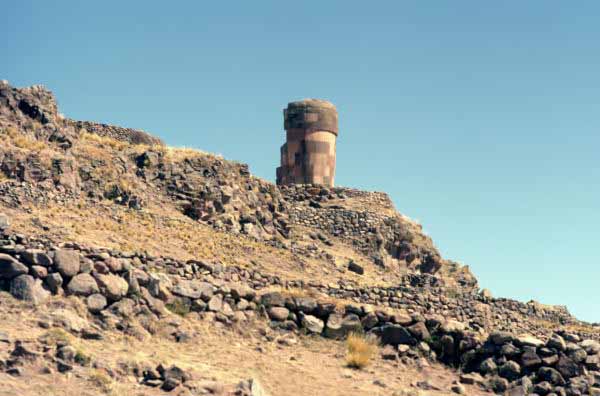 |
|
Chullpa |
 |
|
Isla del Sol |
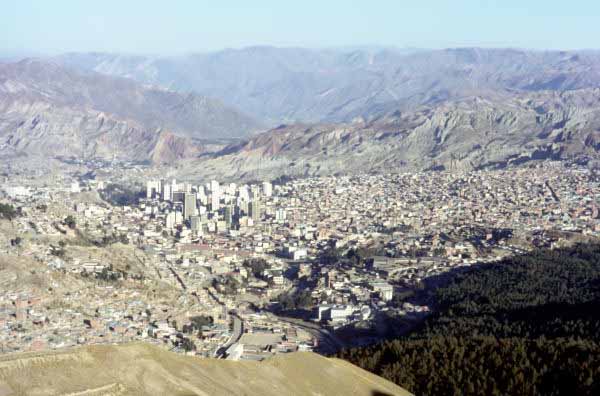 |
|
La Paz
|
 |
|
Tiahuanaco |
|
|
|
|
|
|
The Altiplano was a discovery by its sceneries as well as by the
continuity of the Andean cultures although during their last years,
before the Spanish conquest, they were dominated by the Inca Empire
which took care well not to intervene for better controlling. The
empire concept lay on the acceptance of differences and on the
control of elites kept in power.
|
|
|
|
|
Cuzco, Machu Picchu |
|
|
|
|
|
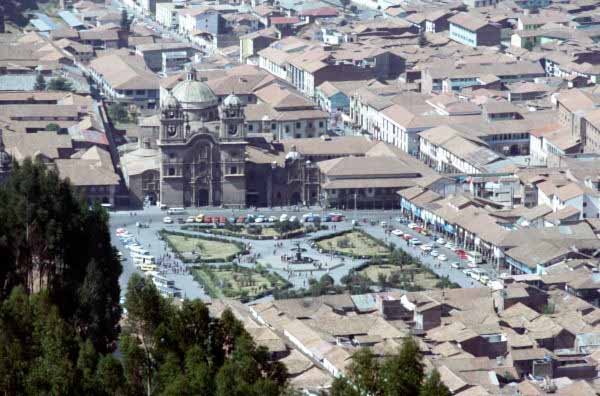 |
|
Cuzco |
 |
|
Machu Picchu |
 |
|
Intihuatana |
 |
|
Ollantaytambo |
|
|
Approach: The
trip from Puno to Cuzco was made by train from the Juliaca railway station.
It lasted approximately eight hours. The landscapes of the Andean plateau
were splendid. The trip was pleased with a wonderful popular festival, colours,
dances and music.
Cuzco: The arrival took place in the late afternoon. The following morning was
devoted to visit the sites out of the city. The rise towards these sites offered
an exceptional panorama on the city. The fortress of Sacayhuaman consists
of a set of several tons of rock blocks perfectly assembled without cement.
The Fortress of Puca-Pucara was set up to defend the access trail to Cuzco.
Tambomachay is a bath set supplied by a hot spring.
The theatre of Kenko is a sanctuary with an altar at the foot of
an obelisk 5,9 m high representing a Puma, the Viracocha God symbol.
The afternoon was spent visiting the Spanish monuments surrounding the Plaza de Armas.
The town centre was visited on foot in two walks, the first
from the Plaza de Armas, included the Cathedral, the Compania, the
Convent Santo Domingo and Coricancha, the Las Nazarenas square and
the San Blas church and back to the Plaza de Armas.
The second walk took the direction of the railway station to visit
the San Pedro church then towards the Regocijo square, the
visit of the archaeological museum and returned to the Plaza de Armas.
Machu Picchu: The excursion towards the
site was on a train, the Indian train, then on a minibus from Punte Ruinas.
The time of the trip by train was an in situ lesson of Indian sociology.
The site was discovered in 1911 by archaeologist Hiram Bingham.
The city was built at the top of a mountain, Machu Picchu, the Old
Peak, dominated by Huayna Picchu, the Young Peak. Nothing
is known of all the history of the city as well as its name. Archaeologists
divided the city into districts with a function for each one, the royal
district, the religious and industrial districts, the district of
the farmers. It is a cyclopean construction, it was necessary to
cut off the top of the hill, to transport rock blocks, to build
houses, to bring arable soil for the terrace cultivation. The
ruins seen from the Hayna Picchu top show the extent of carried out
work, it is imposing. We had the privilege to spend the night at the
hotel on the site, to enjoy the sunset and sunrise.
Pisac: The site extends on the hillside dominating
the Vilcanota river. From the top of the site, the sight offers a superb scenery on the
Inca Sacred Valley and the surrounding mountains. The group of buildings called
Intihuatana forms the religious district and was to be used as an astronomical
observatory. The temple has a circular table with, in its centre, a solar calendar
scheduling agricultural activities.
Ollantaytambo: Dominating the
village, the Inca fortress defended the entrance to the Urubamba
river gorge and the Inca Sacred Valley. It was built like Machu
Picchu, surrounded by cultivated terrace. |
|
|
|
|
|
The sites of the Machu Picchu and Pisac area show the architectural
and urbanistic genius of the "Inca Engineers".
The package tour ended in Cuzco to take the plane to Lima.
We took advantage of the free half-day in Lima, before the
other participants' departure to Paris, to arrange the
conditions of our private excursion which took us by the
Pan-American as far as Trujillo and back.
|
|
|
|
|
From Lima to Chimbote |
|
|
|
|
Approach: The
private excursion plan consisted in visiting the prehistoric sites
in the north of Peru following the Pan-American Highway and going
as far as Cajamarca, a symbolic city. It is in this city in
1532 that Inca Atahuallpa was trapped by Pizarro. We were stopped
in our plan as we were driving out of Trujillo, the army prohibited us
from going more to the north for
"official reasons of insecurity" for tourists.
At the time, the roadway of the Pan-American Highway was very damaged.
It was full of potholes, cracks due to the earth movements, deep ruts
made by trucks, without forgetting sand banks heaped up by wind. Moreover
the excessive speed of the trucks was very dangerous, especially as we
changed a tire on the left side, which took place at nightfall.
The road keeps close to the sea coast, it crosses sand dunes
as soon after leaving Lima.
Callejon de Huaylas:
Road 109, from the Pativilca crossroads, climbs quickly to cross
a pass 4,080m high. At the junction of the Catac village, road 105 leads to
the Chavin de Huantar archaeological site. The road curves at the foot of the
very beautiful Cordillera de Huayhuash and the summits +6,000m high.
Chavin de Huantar
is the first great religious centre of the pre-Columbian period
located 3,180m high on the Cordillera Blanca east slope.
The site gave its name to an important pan-Peruvian culture from 1200
to 700 BC. The Chavin culture is characterized by the stylization of
a "Jaguar God" represented by fangs in a mouth in volute.
The large buildings imply an organizing authority and qualified manpower.
The most representative building is the large pyramid also called El Castillo.
Two carved black columns are characteristic of the Chavin style.
Huaraz: The
city, 3,060m high, was the epicentre of the earthquake in 1970. The site is
remarkable in a green valley, with alpine centres whose atmosphere reminds us
of our French Savoyard villages. The archaeological museum exhibits
monoliths of the Chavin period gathered by father Agusto Soriano Infante.
An excursion on the dirt road took us as far as Caraz in the splendid Callejon de
Huaylas by visiting Laguna de Llanganuco with crystalline water.
Casma:
The return towards the Pan-American Highway was made by the Rio Casma
valley from Huaraz following road 106. we had a mechanical incident due to the
inappropriate meeting of a rock block on the trail which tore off
the drain plug of the sump with the conceivable consequences.
Very fortunately the road was going down as far as the junction
of Pan-American where the town of Casma is located. A garage was at the crossroads.
Repair was made with rudimentary tools showing the mechanical engineering of the craftsman.
The village is in a Sahara-type scenery.
Cerro Sechin:
The site is near Casma. The sanctuary may date back 2000 BC.
It was discovered by Julio Tello in 1937. Several buildings are visible.
One is remarkable by its low reliefs carved on diorite flagstones representing
carnage scenes. This civilization is prior to the Chavin culture. |
|
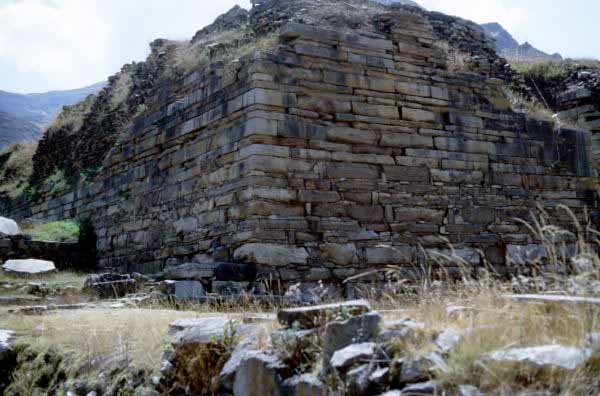 |
|
Chavin de Huantar
|
 |
|
Huaraz
|
 |
|
Cerro Sechin |
|
|
|
|
|
|
The private part of the journey was made by a rented car, in fact a
battered old "Beetle" with which we experienced various mishaps and
incidents. One of the recurring mishaps was the tubeless tire deflating
due to the brutal fall in a deep pothole. The game then consisted in
finding a workshop equipped with an air pump, fortunately they are
numerous and the trade is lucrative.
|
|
|
|
|
From Trujillo to Lima |
|
|
|
 |
|
Chanchan |
 |
|
Chanchan |
|
|
Approach: From Casma, the trip took the Pan-American as far as Trujillo
not without incident. The most serious was the bursting of a tire at
the nightfall on the left side. The change of wheels required looking
for stone blocks to raise the vehicle. The desert environment was not
really favourable to find this material!
Chanchan:
The site is an immense soil heap 18 km2, the ruins of the Chimu kingdom
capital. The ramparts and the walls of the buildings and the dwellings
in adobe have been eroded by time and weather. The visit of the site was
commented on by a Peruvian women guide. Archaeologists reconstituted the plan
of the city assigning supposed functions to the various parts. The friezes
decorating certain walls are the symbolic representation amphibious animals,
birds and fish. According to experts, the city may have been inhabited by
nearly 300,000 people.
Trujillo:
The city was founded in 1524 and was the centre of development of haciendas
producing corn and sugar canes. The superb colonial architecture left by the
long presence of Spaniards was a pleasure for the eyes. The Plaza de Armas may
be the vastest in Peru. Houses are decorated of wrought iron as in Spain.
Walking around the Plaza de Armas made it possible to discover this beautiful
architectural set with balanced dimensions and white monuments.
Huarmey was the stage city
on the back to Lima. The trip was hard with a broken-down old vehicle which required
several stops along this uninteresting road.>
Lima: Back in the capital
we decided a last excursion. |
|
|
The journey with this type of vehicle only adapted
urban traffic was an unforgettable experience. The car rent-agency
refunded us the repairs generated by the mechanical incidents.
|
|
|
|
|
Lima |
|
|
|
|
Approach:
It was an enriching adventure going by train as far as Huancayo.
It was the Lima-La Oroya-Huancayo.
The train at the departure of the Desamparados railway station leaves
everyday to reach La Oroya in 6 hours and Huancayo
in 9 hours. The line crosses the Ticlio pass 4,881m high which is the
highest railway point in the world. This line with innumerable viaducts,
with very long tunnels sometimes, offers dramatic sceneries on surrounding
mountains and Peruvian Selva.
During the first part of the trip, the train ears up soliciting the
controller's descent at rail end to change the shunting position so that the train
goes in the opposite direction to make the following uphill section and so
on as far as La Oroya.
Due to the altitude, a medical service is aboard the train walking along
the corridors at the disposal of sick travellers. The male nurses have
oxygen bottles and a pharmacy.
The return to Lima took the same means of transport for the same duration, 9
hours.
Huancayo: The city,
3.271m high, was founded in 1571. It does not present remarkable monuments.
Its only attraction is its market. |
|
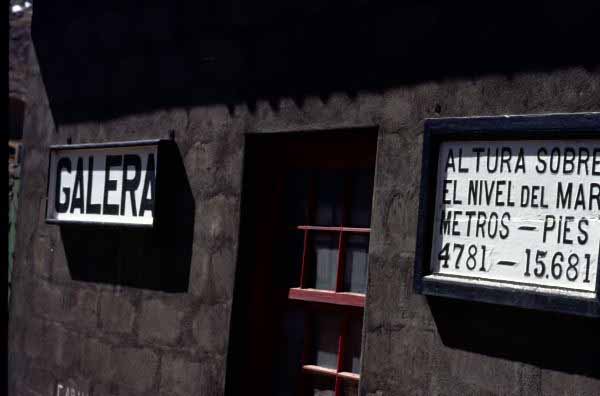 |
|
Galera |
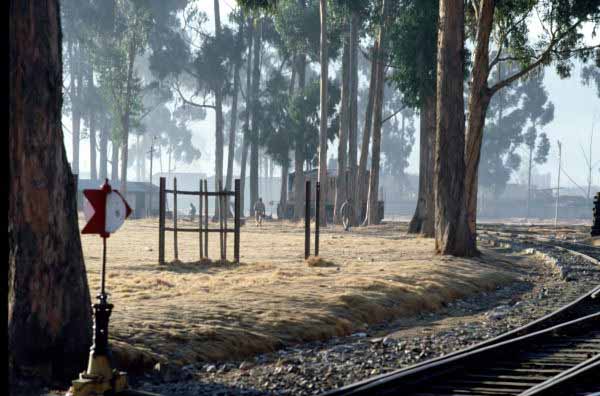 |
|
Huancayo |
|
|
|
|
|
|
The first journey to Peru and to South America was the discovery of the Andean
and Spanish colonial world. There comes out a syncretism from it whose dynamics
have not given their full measure yet. It remains to the Peruvian elite coming
from the colonial aristocracy to show its capacity to manage the social evolution.
The emergence, in the 20th century, of radical revolutionary movements have the necessity
of a social revival. The "Fujimori experience" was not fruitful.
|
|
|
|
|
The return to France was made by an Iberia flight via Bogotá, Madrid then Paris.
|
|
|
|
| Neuilly, le 2003/09/20 |
|
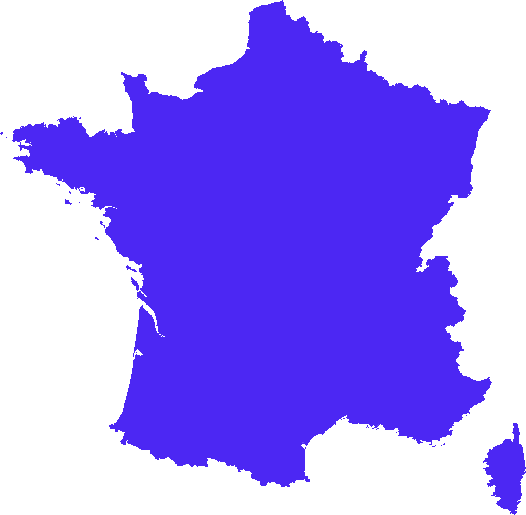
|
|
|
|
|